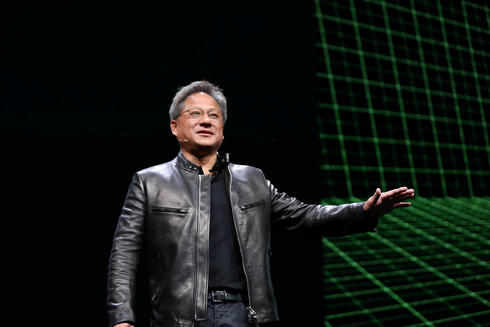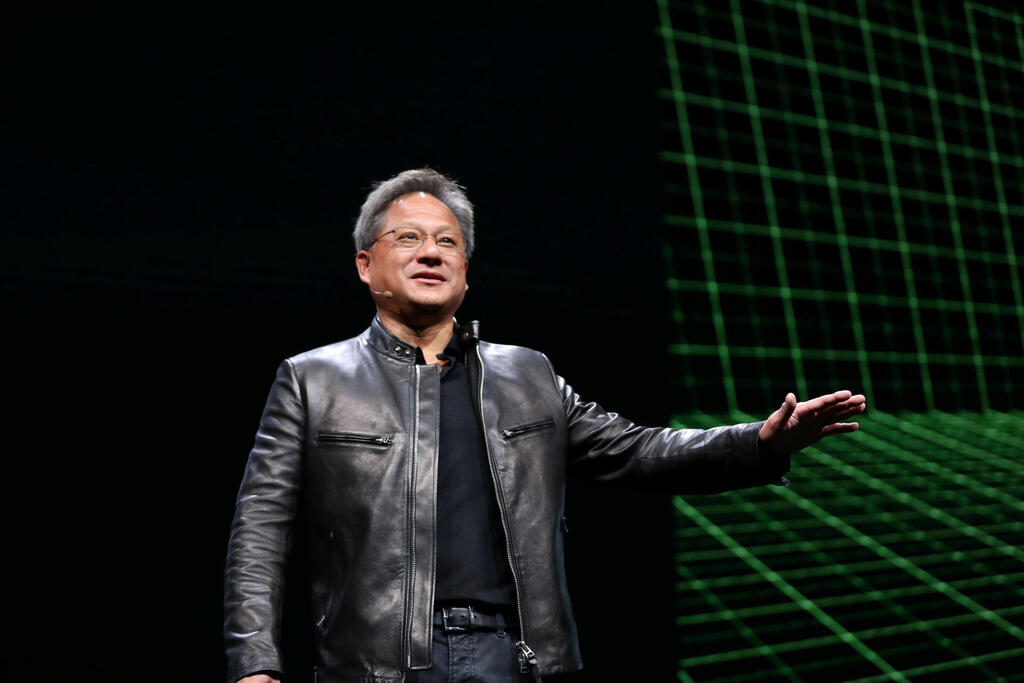
Nvidia CEO: “Generative AI is the defining technology of our time”
CEO Jensen Huang opened Nvidia’s 2024 GTC AI conference in San Jose, California by unveiling the company’s latest technological innovations
Nvidia’s 2024 GTC AI conference was opened on Monday by CEO Jensen Huang, who unveiled a series of technological innovations. Huang presented breakthroughs and new products developed by the company's teams around the world, including in the Israeli branch which employs over 3,500 workers. The conference, attended by tens of thousands in San Jose and hundreds of thousands online, including top figures in the global and Israeli tech industries, is taking place amid a more than 80% surge in the company's stock value since the beginning of the year, bringing it to a market value of $2.2 trillion.
Huang was received at the conference like a rock star and even commented, "I hope you realize this is not a concert. You have arrived at a developers conference. There will be a lot of science describing algorithms, computer architecture, mathematics. I sense a very heavy weight in the room; all of a sudden, you're in the wrong place."
Nvidia unveiled several new innovations, the most significant of which is Blackwell, their new GPU architecture, which is expected to drive the next era of computing. Other new products unveiled the Quantum-X800 and Spectrum-X800 communication technologies developed in Israel. The new Blackwell GPUs, combined with NVLink technology, enable the development of artificial intelligence models with trillions of parameters.
"For three decades we’ve pursued accelerated computing, with the goal of enabling transformative breakthroughs like deep learning and AI," said Huang. "Generative AI is the defining technology of our time. Blackwell is the engine to power this new industrial revolution. Working with the most dynamic companies in the world, we will realize the promise of AI for every industry."
The new architecture is named after David Harold Blackwell, a mathematician specializing in game theory and statistics, who was the first African American elected to the National Academy of Sciences in the United States. According to the company, products based on the Blackwell platform will be available later this year from various partners. Cloud companies such as AWS, Google Cloud, Microsoft Azure, and Oracle Cloud Infrastructure will be among the first to offer Blackwell chips, as well as Nvidia's cloud partners Applied Digital, CoreWeave, Crusoe, IBM Cloud, and Lambada.
Huang introduced Nvidia’s digital twin Earth-2 cloud platform capable of simulating and visualizing weather and climate on an unprecedented scale. The goal is to accelerate research in climate change and combat the economic loss of an estimated $140 billion per year due to extreme weather events. Other revealed advancements in weather forecasting included an Nvidia platform that will enable teams worldwide to collaborate in real-time on applications and tasks to create three-dimensional simulations in OpenUSD standard (Universal Scene Description). Among other things, these models will be used by Taiwan’s Central Weather Administration to accurately predict typhoon impact sites which cause deaths every year.
The Weather Company, a global leader in collecting and analyzing weather data and generating forecasts and insights, plans to integrate its meteorological analysis tools into Nvidia’s Omniverse, allowing its customers for the first time to deeply understand and illustrate the impact of extreme weather events.
"Climate disasters are now normal — historic droughts, catastrophic hurricanes and generational floods appear in the news with alarming frequency," said Huang. "Earth-2 cloud APIs strive to help us better prepare for — and inspire us to act to moderate — extreme weather."
Huang also revealed that a new API for the Omniverse Cloud platform will allow developers to stream interactive OpenUSD-based digital twins directly to Apple's augmented reality glasses, Vision Pro. In the demo presented at GTC, Nvidia displayed an interactive and physically accurate digital twin of a car streamed in full resolution to the Apple Vision Pro screen. In the demo, a user was shown wearing the Vision Pro and using the Car Configurator application developed by CGI studio Katana on the Omniverse platform.
Nvidia also announced expanded access to Omniverse through the cloud (Omniverse Cloud), through new API interfaces that will enable developers to efficiently integrate Omniverse's technological capabilities directly into design and automation applications. This will allow them to generate digital twins or simulations for testing autonomous systems such as robots or cars, or to design industrial sites.
Finally, Nvidia announced dozens of Generative AI microservices that will enable businesses to develop and run applications on their platforms while maintaining full ownership and control of their intellectual property. "The enterprise IT industry is sitting on a goldmine,” said Huang. “They have all these amazing tools (and data) that have been created over the years. If they could take that goldmine and turn it into copilots, these copilots can help us do things.”














